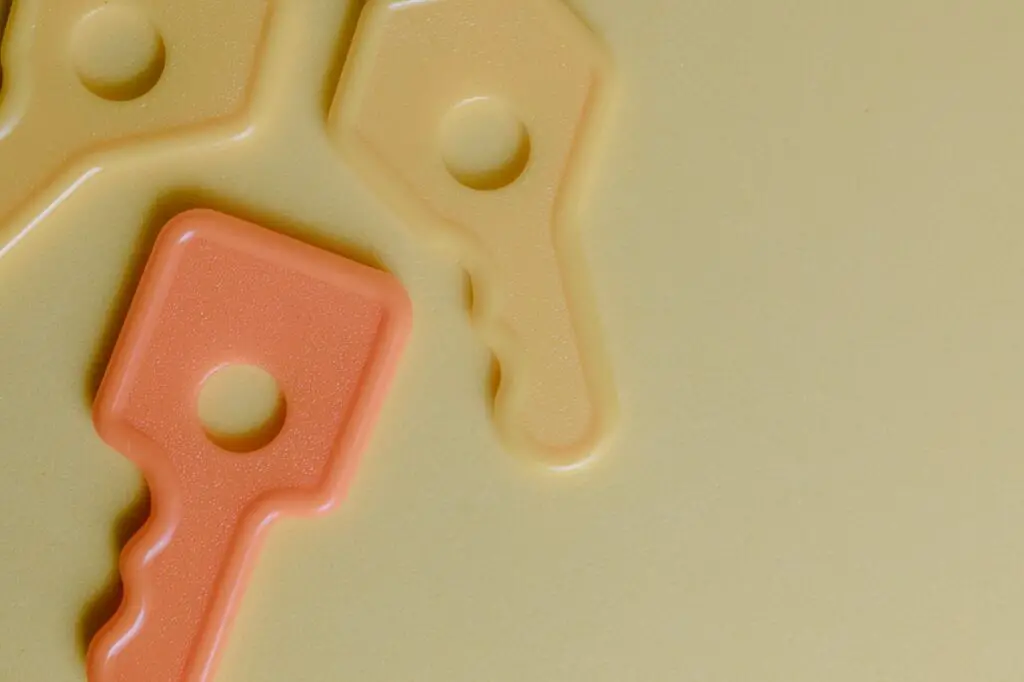How To Remove Yellowing From Plastic Toys? Top Remedies

Plastic toys are a favorite among children of all ages. However, over time they can become stained and yellowed.
If your child’s plastic toys are looking a bit dingy, don’t worry! There are different methods to remove the yellowing and restore them to their former glory.
Table of Contents
Why Does Plastic Turn Yellow?
Plastic is a durable material that can be used for various purposes. However, over time, it can become discolored and yellowed. There are several reasons why this happens.
One reason is that plastic is porous and thus absorbs molecules from its surroundings. These molecules can interact with UV light, causing the plastic parts to appear yellow.
Another reason is that plastic degrades over time due to exposure to direct sunlight, heat, and chemicals. This degradation process produces new molecules that also interact with ultraviolet light, resulting in a yellow hue.
Finally, some plastics contain additives designed to give them a particular color. As these additives break down, the plastic may begin to turn yellow. Whatever the cause, yellowing plastic is a common phenomenon that can be remedied with a few simple steps.
The Issue of Leaving Your Kid’s Toys Unclean
It’s no secret that children’s toys can quickly become covered in dirt, grime, and bacteria. However, when it comes to cleaning plastic toys, many parents are unsure of the best way to proceed.
Some may simply rinse the toy with water, while others may use harsh chemicals. Unfortunately, neither of these methods is particularly effective in preventing yellowing.
Over time, the white plastic will begin to dull and fade in color. In addition to being unsightly, yellowed plastic can also be dangerous for children. The chemicals that cause the yellowing can leach into the child’s body, causing potentially serious damage.
How To Remove Yellowing From Plastic Toys? Top Remedies
Remedy No. 1: Hydrogen Peroxide
Although plastic is designed to be durable, it can often become stained or discolored with age.
Fortunately, hydrogen peroxide solution is a simple way to restore your plastic items to their original beauty. When applied to yellowed plastic, hydrogen peroxide will break down the yellow stains and restore the material to its original color.
Simply apply hydrogen peroxide (a small amount) to a cloth and rub it onto the affected area. For best results, allow the hydrogen peroxide solution to sit on the plastic for several minutes before wiping it away. You can easily bring your old plastic items back to life with a little effort!
Remedy No. 2: Baking Soda and Vinegar
If you’re looking for a way to take off yellowing from plastic without harsh chemicals, this next remedy is for you!
Most likely, you have both Baking soda and vinegar, as they are common household items that can be used to clean and brighten plastic.
Simply mix equal parts baking soda and vinegar to form a paste. Rub the paste onto the yellow parts and allow it to sit for several minutes.
Once elapsed, wipe away the paste with a damp cloth or a paper towel. You should notice a substantial difference in the appearance of your plastic after using this remedy!
Remedy No. 3: Lemon Juice
Lemon juice is another familiar household item that can be used to remove yellowing from plastic. The citric acid that exists in lemon juice is effective at breaking down stains and restoring the original color of the plastic.
Simply apply a small amount of lemon juice to a cloth and rub it onto the affected area. Let the lemon juice sit for a few minutes before wiping it away with a damp cloth.
On some occasions, repeating this process a few times is needed to achieve the desired results. But with a little patience, you’ll be able to bring your yellowed plastic back to its original state!
Soaking Methods
Alcohol
It’s no secret that plastic toys can harbor a lot of bacteria. Even if they’re regularly cleaned, there’s always the risk of missing a spot – and that’s where the germs can thrive. One way to sterilize plastic toys is to clean them with alcohol.
This will kill any bacteria present and help prevent the growth of new bacteria. Alcohol is also an effective way to clean other types of toys, such as metal or wooden toys. However, it’s important to be cautious when using alcohol on plastic toys, as it can cause the plastic pieces to warp or discolor.
As a result, it’s always best to test a small area of the toy first before cleaning the entire surface. By applying these precautions, you can ensure that your child’s toys are clean and safe – and that they’ll stay looking like new for years to come!
Alka Seltzer tabs
Parents with small children know the struggle of keeping toys clean. Whether it’s dirt, food, or who knows what else, it seems like toys are always in need of a wash. But even the most diligent parent can’t always keep up with the constant cleaning.
That’s where Alka Seltzer tabs come in. Just drop one tab into a bucket of water, add the dirty toys, and let them soak for a few minutes. The effervescent action of the tab will help to loosen grime and make cleaning a breeze.
Precautions
There are a few things to keep in mind when using one of the remedies.
- First, it’s important to test a small area of the plastic before applying the solution to the entire surface. This will help to ensure that the remedy won’t damage or discolor the plastic.
- Second, be sure to wipe away any excess solution after cleaning. Allowing the solution to sit on the plastic for too long can cause it to warp or discolor.
- Finally, be sure to rinse the toys with clean water after cleaning. This will help remove any residual solution and prevent the growth of bacteria. This way, you won’t need to worry about harsh chemicals coming into contact with your child’s skin or mouth and causing a chemical reaction.
You can ensure that your child’s toys are clean and safe by taking these precautions!
Required Gear & Materials
You can purchase the following at the beauty supply store or buy directly from Amazon Prime:
- Rubber gloves: You must wear some hand covering as you don’t really want to get this stuff on your skin. It can cause a chemical burn.
- ֿSafety goggles: There is no doubt that you should wear eye protection because if this substance accidentally gets into your eyes, it may blind you (I’m serious, do not give them up!)
- Lemon juice: You can get this at any grocery store in their produce section.
- Cotton balls or swabs: This will be the applicator for the lemon juice.
- Bucket: Any size will do as long as it can fit all of the toys that need to be soaked.
- Distilled white vinegar (optional): This is a natural disinfectant and can be used in place of bleach. It’s also great for hard water stains!
- Water: You’ll need this to fill up the bucket (and maybe add more later on, depending on the size of your container).
- Dish soap (optional): If you have extra grime or dirt build-up, you can add a squirt or two dish soaps to the bucket. This will help break down any tough dirt and make cleaning a breeze.
For Further Whitening
You may have noticed that most of the yellow plastic whiteners available on the market are only effective on certain types of plastic. This is because different plastics are made from different materials, and each type of plastic responds differently to bleaching agents.
As a result, it’s important to select the right whitener for the job. For example, if you’re trying to whiten a coffee mug, you’ll need a different whitener than if you’re trying to whiten a plastic toy.
In general, however, a few tips can help you get the best results when whitening plastic toys.
First, be sure to read the instructions carefully and follow them exactly. Second, use a clean, lint-free cloth to avoid streaks.
Finally, be sure to rinse the plastic with clean water after whitening. By following these tips, you can ensure that your plastic looks new.
The Bottom Line
Now that you know how to remove yellowing from plastic toys, you can keep your child’s favorite playthings looking new. With a little effort and the right products, you can ensure that your child’s toys are clean and safe – and that they’ll stay looking like new for years to come!
Read also:
- How To Clean Bath Toys After Poop? Best Way!
- How To Clean Wooden Toys? Effortless & Natural Way!
- How To Get A Toy Out of The Toilet? Best way!
- Your Toddler Throws Toys Instead of Playing? Here’s Why
- Is Kinetic Sand Toxic?
- Baby Walker vs. Baby Jumper – Which is better?
- Bumbo Floor Seat vs. Fisher-Price Sit-Me-Up – Which one is the Best for your baby?
- Best Baby Safety Helmets for Crawling
